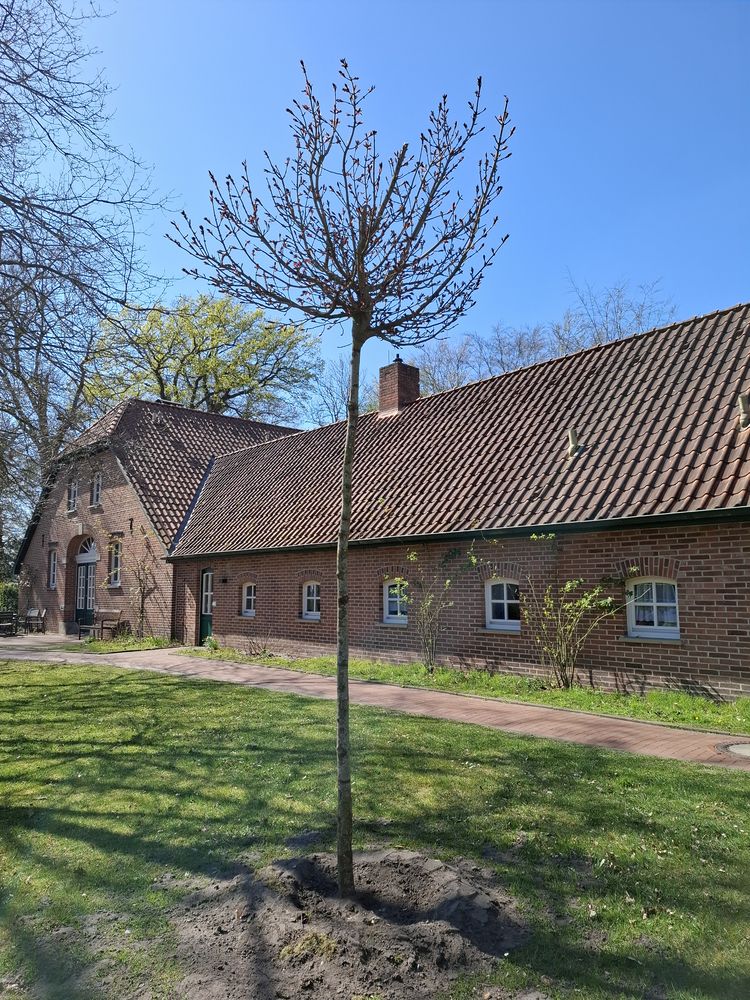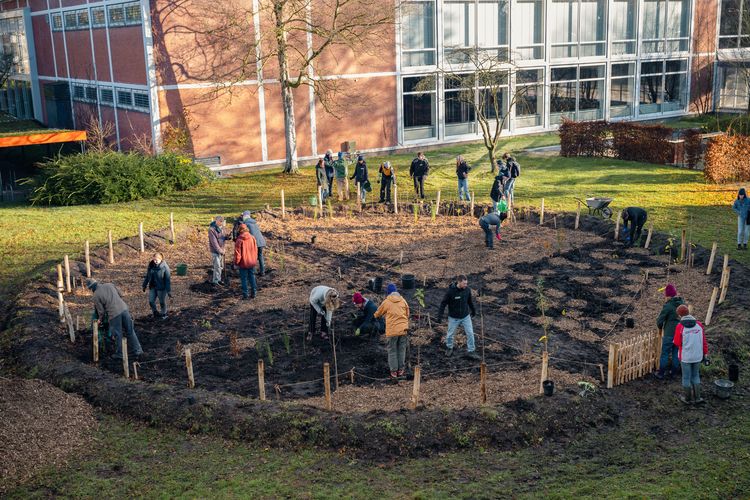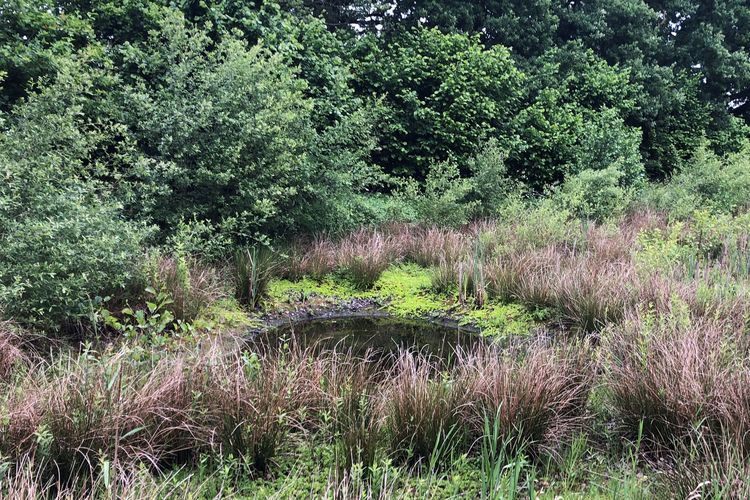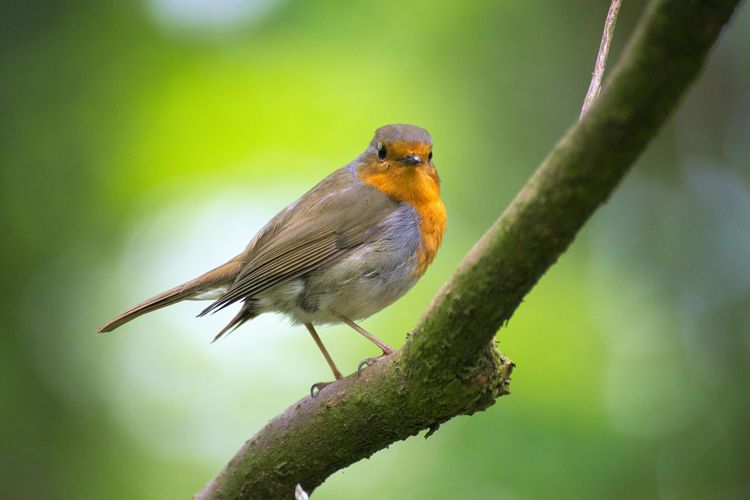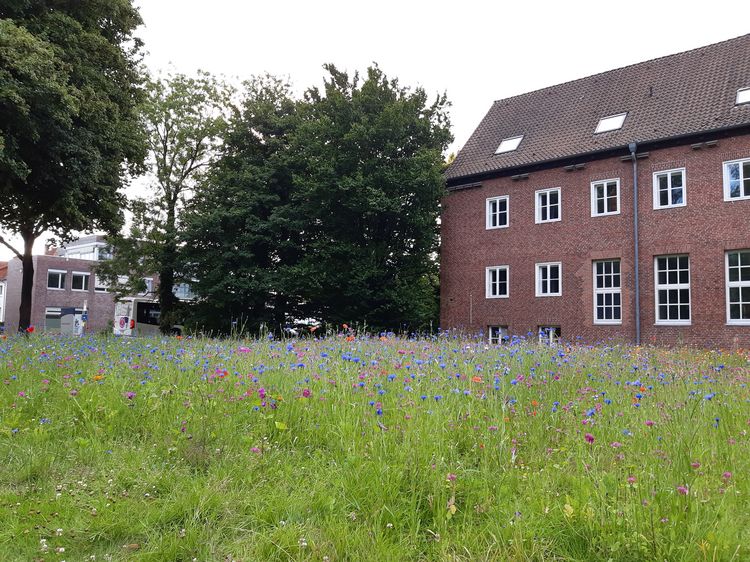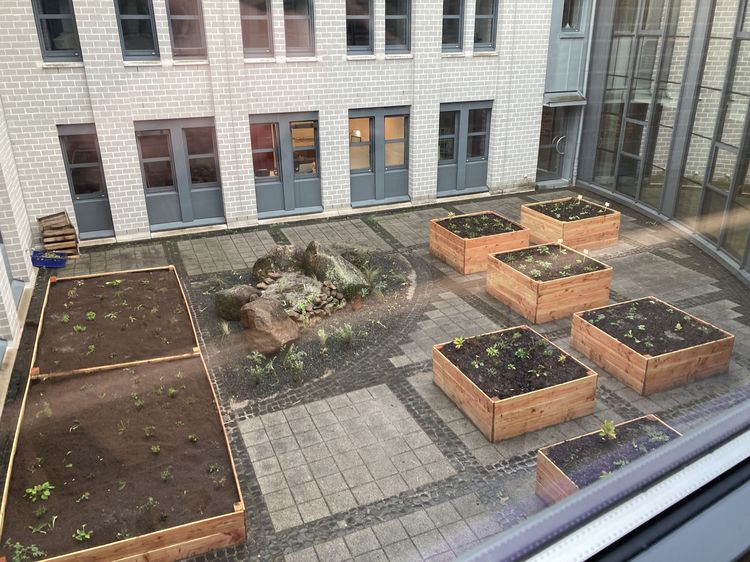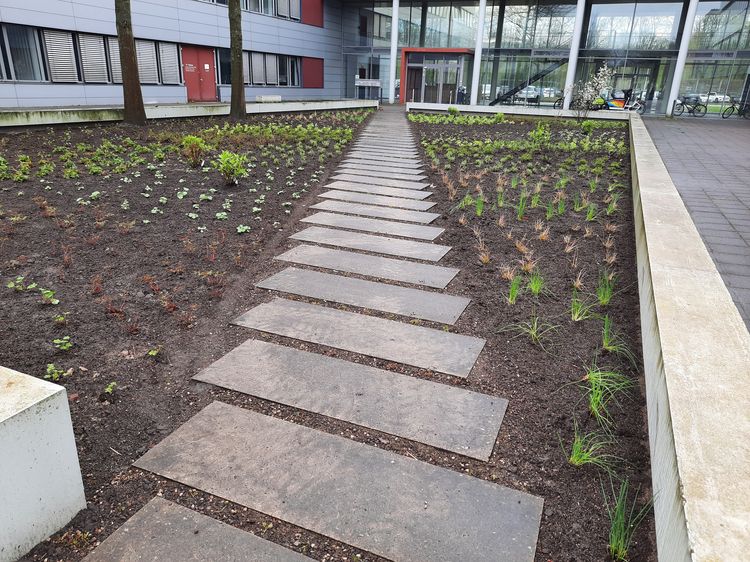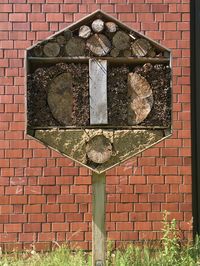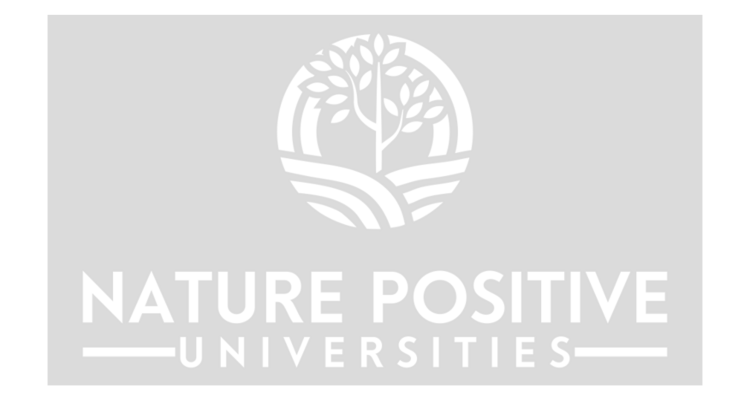Ecology and Nature Conservation
Ecology and Nature Conservation

Sustainability and environmental protection are not topics that are dealt with in a vacuum at Oldenburg University. Consideration of the campuses and properties as a habitat for not only people but also flora and fauna is also coming more and more into focus.
In winter 2024/2025, numerous new trees were planted at the Wechloy and Haarentor sites:
- 4 pollarded willows at the sports grounds
- 3 pollarded willows in front of A01
- 1 blood maple each at the University Guest House and in front of A11
- 1 small-leaved lime tree in front of A10
- 3 hazel trees in front of A11 (in the direction of Ammerländer Heerstr.)
- 1 hazel tree near A15
- 4 plane trees in front of A15
- 1 silver willow in front of A01
In addition, the Botanical Garden has planted surplus apple trees in front of building A13 in Haarentor.
Projekte
Tiny Forest
Natural rainwater retention basin
In the winter of 2024/2025, the rainwater retention basins behind building W32 at the Wechloy site were cleared of vegetation. This allows the biotope character of the watercourses to be preserved and promoted. The rainwater retention basins are important habitats for amphibians on campus, for example.
Breeding bird mapping 2024
In the period from March 29 to June 13, 2024, systematic breeding bird mapping was carried out centrally for the first time at the Wechloy and Haarentor sites. This laid the foundation for closer observation of bird populations and initial biodiversity monitoring at the university. A total of 22 species have bred on the university grounds. In addition, 17 other species used the habitat, for example for foraging. The old tree structure at the Wechloy campus in particular has resulted in a high diversity of species. Further bird protection measures can now be derived from the results. The mapping of breeding birds is to be carried out regularly.
This year's mapping was carried out by student Tilda Malen Hennes (M.Sc. Landscape Ecology). The project was also supported by the working group of Prof. Dr. Schmaljohann (AG Migration Ecology).
Flowering and wild meadows
Campus garden
The "CampusGarten"is a student project of the AStA's sustainability department, which has been set up in Haarentor on the grounds between buildings A10 and A07. Once a week, a group of students comes together here to garden together. The university supports the project not only with the space, but also financially. In return, it is permanently accompanied by a course.
Plant exchange box
Since the end of May, initiated by the AStA, there has been a plant exchange at the Haarentor site between buildings A07 and A10. There, people can bring, swap and take cuttings of their own plants and seeds. In combination with the Tiny Forest, the CampusGarten and the CampusAcker, a real eco-corner has been created on the Haarentor campus.
Nesting boxes
Various nesting boxes hang on the university's sites to provide birds with a place to nest. For example, swifts or starlings find a home at Oldenburg University during the breeding season. A nesting box for kestrels has been hanging on the NeSSy research building since July 2017 - a project that was implemented together with NABU Oldenburger Land.
Inner courtyard design A05
On 13 and 14 October 2023, a lot of drilling, screwing and shovelling took place in the inner courtyard of building A05. Following an initiative by the "Sustainability Economics and Management" Student Council, the courtyard was made more ecological by building numerous raised beds and planting them with insect-friendly perennials. The Student Council is also responsible for the further maintenance of the beds.
The project was financed by the Department of Economics and Law, with implementation supported by the University of Oldenburg's climate protection management team.
Redesign of area V03
ballot bins
Initiated by the student initiative sneep two ballot bins were installed on the Haarentor campus in April 2019. These oversized ashtrays are intended to help reduce the number of cigarette butts that end up on the ground. The ballot bins are also an opinion monitor that encourages participation. They consist of two separate chambers - each one represents an answer option and has its own hole for voting by butt. The current voting status is visible at first glance, as the front of the bins is transparent.
Insect hotels
There are a total of five bee hotels on the Wechloy campus, the Haarentor campus and in the university's Botanical Garden. They are the result of the "BeeScapes" project, which was funded by the European Regional Development Fund and aims to create more diverse habitats for insects and counteract the decline of the six-legged crawlers.
Nature Positive University
Since December 1, 2022, the Carl von Ossietzky University of Oldenburg has been a founding member of the global network of Nature Positive Universities - a program initiated by the United Nations Environment Programme and the University of Oxford. The University of Oldenburg is thus committed to the great importance of biodiversity and nature conservation and undertakes to take effective measures in this area. The network and the initiative were presented at COP15, the UN Conference on Biodiversity.
Measures from climate action concept
The following list of measures in the field of action Ecology of the Campus is an excerpt from the Integrated Climate Action Concept. A more detailed view of the respective sub-measures can also be viewed there.
- "Forest Campus”
- Facade & roof greening
- Develop a comprehensive utilisation concept for all areas
- Biodiverse design of green spaces
- Promote environmental education on campus


